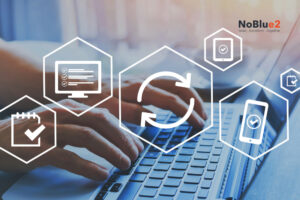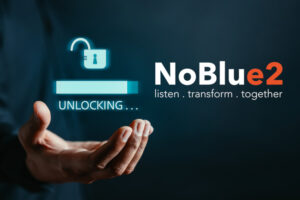If you are considering a new business software solution, you will likely have many options to choose from. But the first consideration – especially with ERP software – is often whether to select an on-premises system or a cloud-based, software-as-a-service (SaaS) solution.
There are considerable benefits of SaaS solutions – as is evident from the growth of the SaaS industry over recent years, with spend estimated in 2022 to reach $171.9 billion.
If you too are deciding between SaaS and on-premises solutions, take a look at these key benefits of choosing SaaS.
Reduced Hardware and Staffing Costs
With on-premises systems, there are often large, up-front costs. There are the costs of the software itself and the hardware that it runs on.
But with SaaS, you don’t need to furnish a server room with expensive hardware. Instead, your data is held in the cloud and you can access it from an internet-enabled device.
After an initial customisation fee – which is not always necessary for all types of software – there’s just a predictable, monthly or annual subscription fee to pay. This may scale as you grow – to accommodate additional users, for example. But again, this is a foreseeable cost and you are not suddenly incurring fees for an upgrade to the software or costs for buying new servers.
With SaaS, you also benefit from cost-savings in that there’s no requirement for you to employ IT staff specifically to manage your servers and ensure they and your software are maintained.
Faster Deployment
SaaS solutions can typically be deployed far more quickly than on-premises software. This is partly because you don’t need to firstly take the time to source and install the IT infrastructure before implementing the software.
For very simple SaaS solutions, it’s often a case of simply logging in and getting started. More complex solutions, like ERP, obviously require more work. Sometimes specific customisation is required, or data needs to be cleaned and migrated (LINK). But still, the speed at which a cloud-based SaaS system can be implemented is much faster than with on-premises software.
You can also roll it out quickly to other locations and business entities, all of which could add up to significant time savings.
Up to Date Software
When you update your on-premises software, customisations you have previously made may need to be reconfigured once the latest version is implemented.
Additionally, it can be costly to upgrade on-premises systems like ERP. And it is not a swift process, so your system is out of use for some time. Because of this, businesses will often defer the process. Not only does this mean the software is not running the latest version, and you are missing out on enhancements and new features, but it is also possible that bugs or issues will not be rectified.
SaaS solutions are updated in the background, so you are always using the latest software version, without needing to proactively arrange a time when it is most convenient for your system to temporarily be down.
Aside from seamless upgrades, patches and fixes are also made discreetly in the background by the provider, so security and usability are both maintained to a high level.
Scalability
As you grow, you may well open additional offices or expand overseas, increasing your need for hardware and additional data storage. If your business is very dispersed, with offices in many locations or countries, you will also require extra IT staff to manage your on-premises systems for you.
In contrast, SaaS systems will scale with you, without any additional costs for their upkeep or for the amount of data storage required.
Improved Security and Uptime
Keeping your data secure and protected against breaches or unauthorised access is an undertaking that requires specialist knowledge and investment in security systems or expert staff.
With SaaS systems, security is the responsibility of the provider. They operate rigorous monitoring and security processes to ensure their systems are robust and secure. Plus, they protect their customers’ data with strict backup protocols, allowing for easy disaster recovery.
If you have an on-premises system, no-one external to your organisation knows if it is up or down. SaaS systems however publish this information and their success is subject to having high uptimes. So, it is a priority for SaaS providers to ensure the reliability of their systems, as they want your business to operate with minimal interruption. NetSuite for example, commits to ensuring a 99.5% uptime for its users and achieves a 99.98% rate.
If your system is being maintained locally, then it is unlikely that you could match these sorts of results, especially if IT staff numbers are reduced due to annual leave or sickness. SaaS solutions are supported by large numbers of dedicated IT professionals, so can assure high levels of access.
Accessibility
Possibly the biggest benefit of SaaS systems is that they are accessible from anywhere, using any device. As long as you have internet access, it doesn’t matter if your employees are working from home, are on site with a customer, or away on holiday. Web-based access means they can use a mobile, tablet, laptop or desktop to log in and work.
Even if on-premises systems allow for remote access, they do not have the same advantage as users’ devices will typically need to be configured separately so that they can access the system from outside of the company’s normal locations.
NetSuite gives you true cloud functionality. For more information, contact us for a tailored quote or demonstration.










